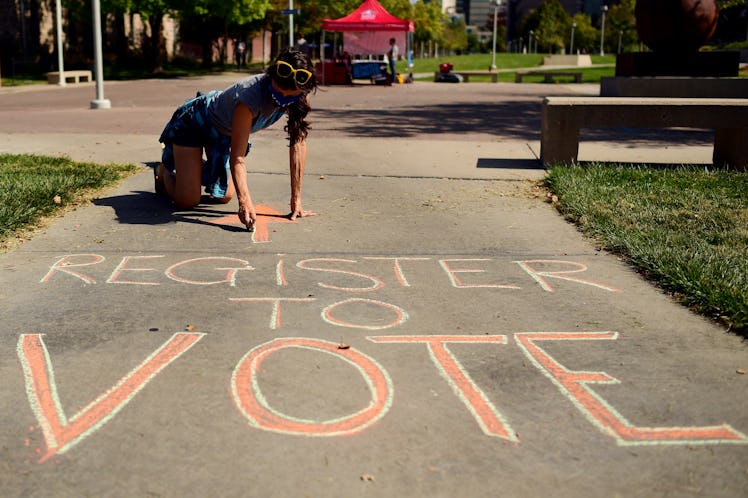
Here's What To Know About Voting In The State Where You Go To College
At the very least, here’s where to register.
The 2022 midterm elections are just around the corner, and the voter registration deadline is already approaching (or even passed) in dozens of states across the country. Voting is more important now than ever, and it's key you know your rights and how you can make your voice heard. If you’ll be away at school when it’s time for midterm elections in your state, here’s what you should know about how to vote in the state where you attend college.
So, what are the midterm elections, and why is it so important to vote in them? In 2022, Election Day is Nov. 8, the Tuesday immediately after the first Monday in November. During this critical election, all 435 seats in Congress’ House of Representatives (as well as 35 of the 100 seats in the Senate) will be up for grabs — not to mention dozens of important statewide races like those for governors and state attorneys general.
According to Best Colleges, college students can vote in the state where they're attending college as long as they have a “temporary or permanent residence” there and they've registered in that state. However, if you go to school out of state, then you'll have to choose whether to be registered in your home state or college state, because you can't be registered in both states, per Vote.org.
If you want to remain registered in your home state but still want to rock their vote, you'll have to opt for an absentee ballot, or plan to go back home to cast a ballot in person. However, if you want to switch your voter registration to your college state, make sure to go to your current registration information and update your new address. Then, make sure to register to vote in your new state and off you go to flex your rights. (But do it fast, because registration deadlines are coming up.)
Once you decide which state you want to vote in, decide how you'll vote. In some states, you’re required to have an “excuse” for absentee voting, so make sure you check your state’s rules and whether you apply. If you register in your school's state, check if you can vote early in-person or by requesting an absentee ballot. For some states, the deadline to register to vote may have already passed. However, the deadline to send in your absentee ballots sometimes gives you more wiggle room: Absentee ballot deadlines vary by state, but most states require the ballot be postmarked and/or received by Election Day. In any case, it's always best to get your ballot in as soon as possible.
While making your voice heard through the ballot box has always been important, younger voters like Gen Z are only just getting started. During the 2016 presidential election, only around 4% of Gen Zers were eligible to vote, according to an October 2020 report from Pew Research Center. While that percentage more than doubled to 10% in the 2020 presidential election, it’s still nowhere near as much as their older counterparts, like Millennials, Gen Xers, and Baby Boomers. In fact, according to Pew, around 52% of eligible voters in 2020 were over age 50. But when it comes to influence, the power young voices can have on politics today is unparalleled. It's important to remember that voting in the November midterm elections is everyone's way of stepping forward and advocating for the policies and opportunities they think are important.
No matter who or where you are, your vote counts. Not sure if you're registered? Here's what to do. And then, get out there and cast that ballot!
This article was originally published on